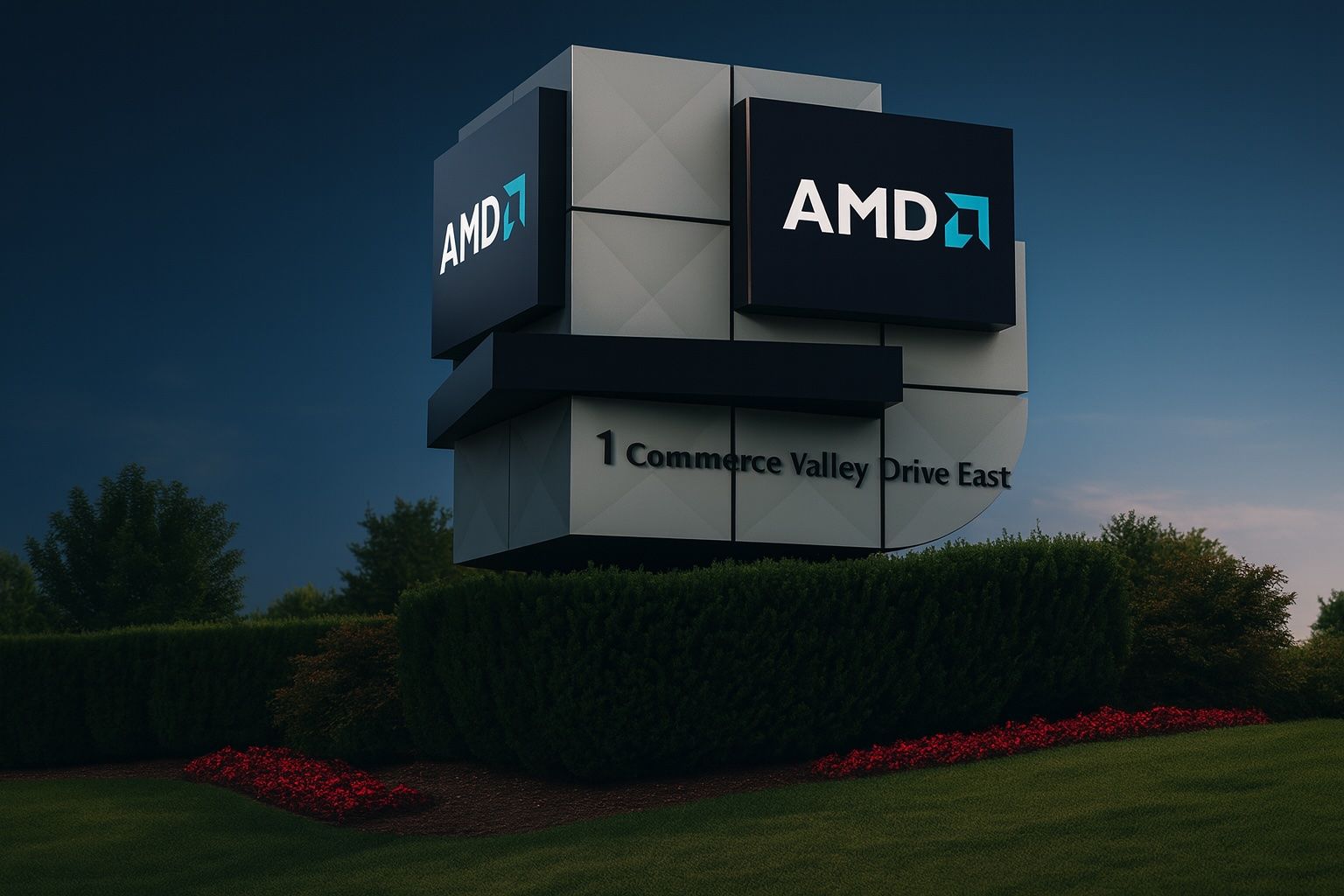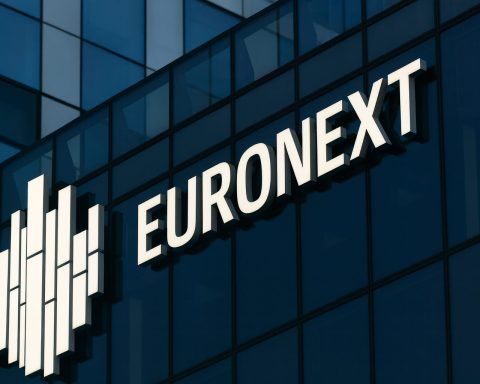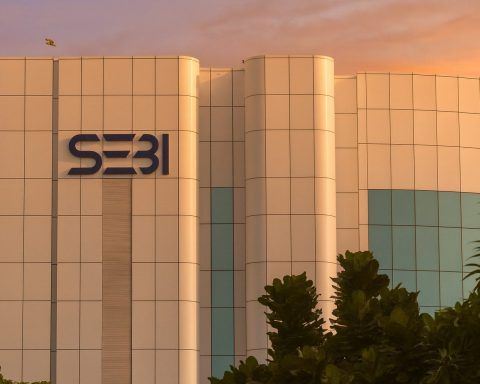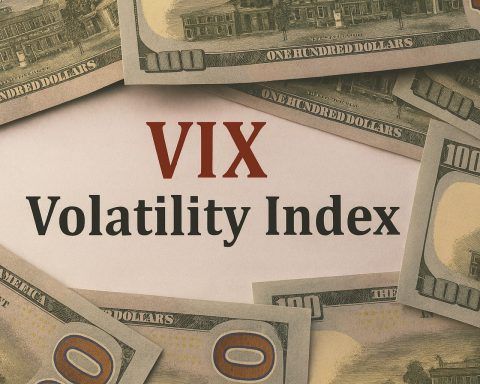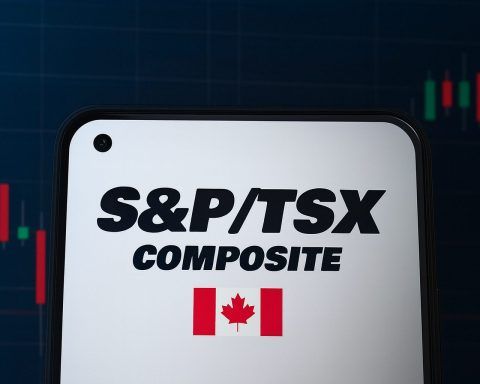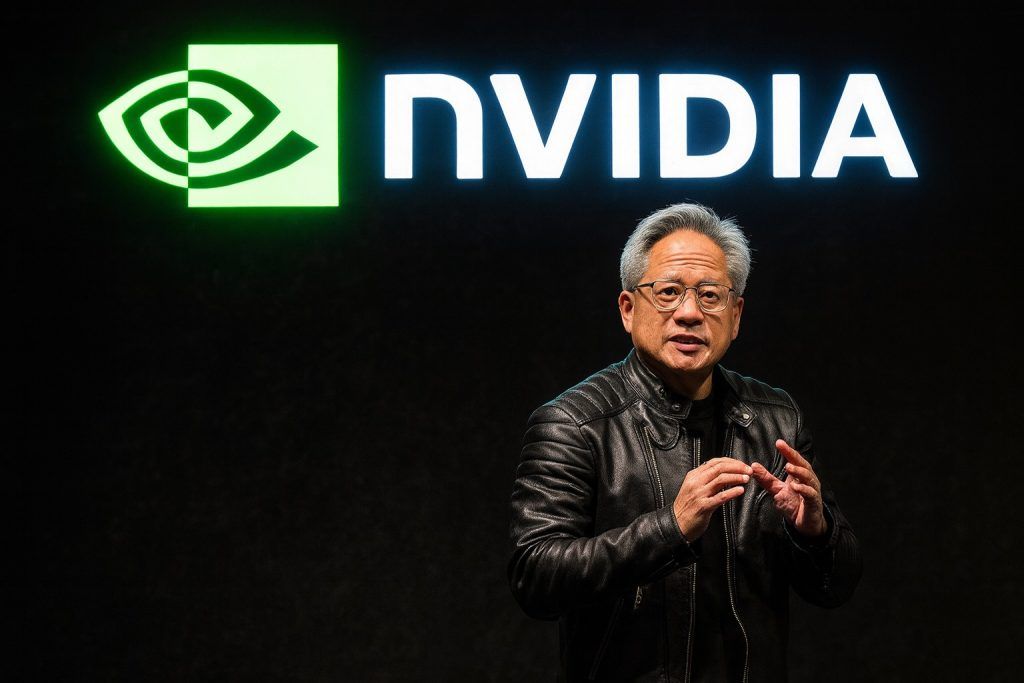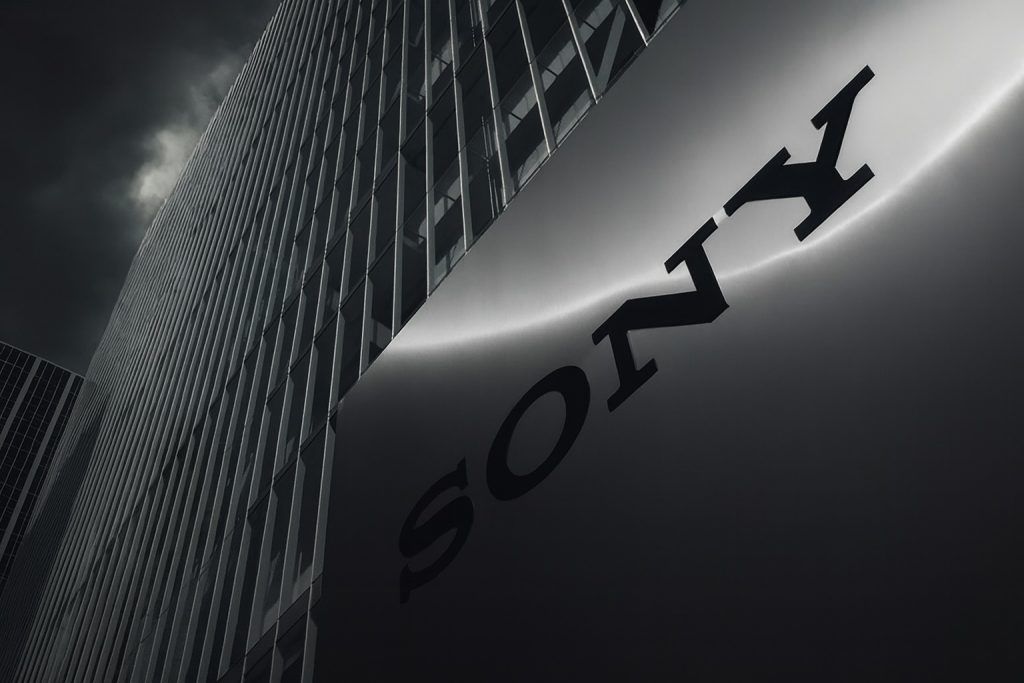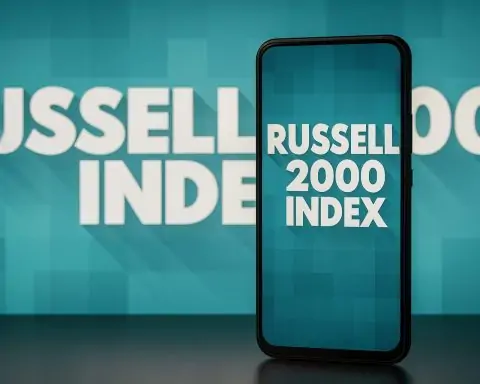- Stock Soars: AMD shares surged about 30% in early October 2025, jumping to roughly $200 per share after a landmark AI deal – one of AMD’s biggest one-day gains ever [1] [2]. This rally boosted AMD’s market capitalization to well over $300 billion (up from ~$270 billion before the news [3]), solidifying its rank as the world’s third-most valuable chipmaker (behind only giants like Nvidia and TSMC).
- Blockbuster AI Partnership: On October 6, AMD announced a multi-year deal to supply hundreds of thousands of AI chips to OpenAI (the maker of ChatGPT). The agreement – equating to a massive 6 gigawatts of computing capacity – could deliver “tens of billions of dollars” in annual revenue for AMD [4]. In return, OpenAI received warrants to buy up to ~10% of AMD’s stock at just $0.01 per share [5], an equity sweetener aligning OpenAI’s success with AMD’s. AMD’s data-center chief hailed the deal as “certainly transformative…for the dynamics of the industry” [6].
- Rising AI Challenger:AMD is aggressively challenging Nvidia’s dominance in AI chips. CEO Lisa Su has unveiled new data-center accelerators (MI300X GPUs available now, and MI400-series “Instinct” chips coming in 2026) along with an open-platform “Helios” supercomputing system – all aimed at competing with Nvidia’s top-tier GPUs within the next year or two [7] [8]. Major tech players like Microsoft, Meta and Oracle are already testing or deploying AMD’s latest MI300X processors for AI workloads [9] [10]. AMD’s strategy of using open-source software (ROCm) and standard connections (Ethernet, x86) contrasts with Nvidia’s more proprietary approach, appealing to customers wary of vendor lock-in [11].
- Shifting Rivalries & Partnerships: AMD continues to steal CPU market share from Intel thanks to its high-performance Ryzen PC chips and EPYC server processors [12]. In an unprecedented twist, Intel is reportedly in talks to produce chips for AMD via its new foundry business [13]. This potential cooperation – unthinkable in years past – highlights surging demand for advanced chips and AMD’s need for additional manufacturing capacity beyond TSMC [14]. It’s a remarkable example of how the chip boom is reshaping alliances, as even arch-rivals consider “coopetition” to meet global AI hardware needs.
- Wall Street Outlook:Analysts are broadly bullish on AMD’s prospects, though some urge caution on valuation. Many firms have raised price targets in light of AMD’s AI momentum – for example, HSBC doubled its target to $200, projecting a “big reversal” with over $8 billion in AI revenue this year [15]. UBS recently upped its target to $210 citing strong server chip demand [16], and after the OpenAI deal Jefferies upgraded AMD to “Buy” with a Street-high $300 target [17]. As a group, ~28 of 44 analysts rate AMD a Buy (consensus “Strong Buy”) [18]. Skeptics, however, note AMD’s stock now trades at 90×+ earnings, a rich price that “leaves little room for error” if growth falters [19]. They warn that Nvidia still controls ~94% of the AI GPU market and that AMD must execute flawlessly to justify its hype [20] [21].
Stock Performance & Key Financials (October 2025)
Advanced Micro Devices (AMD) has been one of 2025’s standout tech stocks. After a volatile 2024 (when AMD slid 18%), the shares rebounded strongly this year on the back of the AI boom [22]. As of early October 2025, AMD trades around $200 per share – up sharply from the ~$150s just a few weeks prior, and roughly 50–60% higher year-to-date. The stock’s latest spike came after news of a major AI partnership (details below) sent investors into a buying frenzy. In fact, on October 6 alone AMD surged over 30%, adding about $80 billion in value – its biggest one-day jump since 2016 [23]. This rally lifted AMD’s market cap to an estimated $320–330 billion, making the 54-year-old company the 3rd most valuable chipmaker globally (though still only a fraction of Nvidia’s towering ~$4 trillion valuation) [24] [25].
Such stock enthusiasm reflects optimism about AMD’s growth. Investors have been bidding up AI-related chip stocks across the board – a bit of a FOMO-driven frenzy, as some analysts note [26]. AMD’s price/earnings ratio has consequently ballooned: even based on forward earnings, AMD trades at 50–60× 2025 profits, well above the market average. On a trailing 12-month basis the P/E is near 94× [27], double Nvidia’s ~50×. This rich valuation implies that investors are pricing in significant future growth for AMD. The company pays no dividend, choosing to reinvest in development, and its key financial metrics (per Yahoo Finance) underscore the growth story: revenue over the past 12 months is around $25–30 billion, with healthy cash flows but slim margins due to heavy R&D spending. AMD’s 52-week range has been roughly $95 up to $186 prior to this week [28]; the current ~$200 level marks a new multi-year high, well above the average analyst price target (~$152) that prevailed just a few months ago [29].
By market capitalization, AMD now ranks behind only Nvidia and TSMC among semiconductor firms. It even eclipsed longtime rival Intel’s value in recent years. This market ascent is a stark turnaround for a company that was worth under $2 billion in 2012 before CEO Dr. Lisa Su took the helm [30]. AMD’s rise from underdog to industry heavyweight has been called “one of the most dramatic turnarounds in tech” [31], and it’s drawing mainstream attention to the stock. AMD’s ticker is frequently trending on financial sites amid the AI hype [32], reflecting intense public interest. Of course, such momentum can cut both ways: with lofty valuation comes vulnerability. Any stumble – a weak earnings report, product delay, or macroeconomic hiccup – could trigger outsized volatility. For now, though, momentum is firmly on AMD’s side heading into year-end 2025.
OpenAI Partnership: A Blockbuster AI Chip Deal
The catalyst behind AMD’s latest surge is a landmark deal with OpenAI, announced on October 6, 2025. OpenAI, the company behind ChatGPT, agreed to source a huge share of its future AI processors from AMD in a multi-year partnership. The scale of this agreement is unprecedented for AMD: OpenAI plans to deploy roughly 6 gigawatts of computing capacity using AMD’s chips – equating to hundreds of thousands of high-end GPUs to be delivered over the next several years [33] [34]. For context, 6 GW of AI computing is enormous (on the order of powering 5 million homes); it underscores the voracious demand for AI hardware in OpenAI’s quest to build ever-more powerful AI models.
Financially, the deal is a game-changer for AMD. Executives project it will eventually bring in “tens of billions of dollars” of revenue per year once fully ramped [35]. In fact, AMD estimates over $100 billion in total new revenue across four years from OpenAI and related customers drawn by this partnership [36]. To put that in perspective, AMD’s total revenue last year was under $25 billion – so this single deal could quadruple AMD’s business in coming years if all goes to plan. The first deployments start in late 2026, when OpenAI will stand up a 1 GW data center using AMD’s forthcoming Instinct MI450 accelerators [37]. Those next-gen MI450 GPUs (successors to today’s MI300 series) are being co-developed with OpenAI’s input to ensure they meet the company’s AI needs. AMD will recognize revenue as these rollouts progress, with meaningful impact expected from 2026 onward.
One unique aspect of the agreement is how it aligns AMD and OpenAI’s incentives. As part of the deal, AMD granted OpenAI a warrant to purchase up to 160 million AMD shares at $0.01 each – roughly 10% of the company – if certain milestones are met [38]. These vest in tranches as OpenAI installs the chips and as AMD’s stock hits performance goals. Notably, the final tranche requires AMD’s share price to reach a lofty $600 [39] (nearly 4× the current price) before expiration. In essence, OpenAI will earn a significant ownership stake in AMD only if both sides succeed spectacularly – if AMD’s hardware truly supercharges OpenAI’s growth (driving AMD’s stock way up). This equity sweetener, virtually free to OpenAI, “brings the best of AMD and OpenAI together…enabling the world’s most ambitious AI buildout,” said AMD CEO Lisa Su [40]. It signals how confident AMD is in the partnership’s potential, effectively betting a chunk of the company on making it work.
“We view this deal as certainly transformative, not just for AMD, but for the dynamics of the industry,” AMD’s data center EVP Forrest Norrod said of the OpenAI pact [41]. Indeed, landing OpenAI – arguably the hottest name in AI – is a huge vote of confidence in AMD’s technology. It instantly elevates AMD’s credibility in AI circles. Analysts likewise called the agreement a “major vote of confidence” in AMD’s AI chips and software [42]. By clinching this marquee customer, AMD has gained one of the premier seats at the AI table. “OpenAI’s valuation surge and partnerships have been lifting all AI chip stocks”, one analyst told Yahoo Finance, “and now AMD has one of the premier seats at the table.” [43] In other words, AMD is no longer a mere spectator in AI – it’s directly supplying the computing fuel for one of the field’s leaders.
It’s worth noting that Nvidia is not being displaced here so much as joined. OpenAI’s move to source from AMD comes on the heels of OpenAI also expanding deals with other suppliers. Just a month prior, Nvidia (currently the dominant AI chip maker) inked its own $100 billion supply arrangement with OpenAI to continue providing GPUs through 2026 [44]. And just a week ago, OpenAI struck agreements with Samsung and SK Hynix to secure advanced memory chips for AI [45]. OpenAI is clearly hedging its bets and diversifying its hardware supply. It wants multiple partners – Nvidia, AMD, and others – to ensure it can get as many chips as possible for its exploding compute needs. This diversification is smart risk management, as one strategist noted, so OpenAI isn’t bottlenecked by any single vendor [46] [47]. Nvidia still produces the gold-standard AI GPUs and even invested $5 billion in OpenAI’s key cloud partner this year (Oracle) [48]. So OpenAI’s embrace of AMD doesn’t mean Nvidia is out – it means the AI market is growing so fast that there’s room (and need) for a second supplier. OpenAI’s CEO Sam Altman said the partnership with AMD is “a major step in building the compute capacity needed to realize AI’s full potential,” saying AMD’s cutting-edge chips will “accelerate progress” in AI for everyone [49]. In short, OpenAI needs all the chips it can get – and bringing AMD into the fold ensures Nvidia won’t have a monopoly on its future.
For AMD, the market reaction to the OpenAI news was emphatic. The stock’s steep jump indicates investors see this as a transformative opportunity for AMD’s future earnings. It’s a stark reversal from just days earlier: in late September, rumors emerged that OpenAI might develop its own AI chips (potentially with Broadcom’s help), which sent AMD’s stock down ~5% on fears OpenAI would bypass chip vendors [50]. That narrative flipped overnight with the Oct 6 announcement – instead of a threat, OpenAI turned out to be AMD’s biggest win yet. Still, the real test lies ahead: AMD must now deliver on this massive order. The chips (some still in development) have to be built on time and meet performance expectations. Production at this scale will challenge AMD’s supply chain (as discussed later), and the revenue won’t start rolling in until 2026. So while investors are celebrating, AMD’s execution in the next 1–2 years will determine if this mega-deal truly lives up to its promise.
Beyond OpenAI: New Partnerships, Products & Competition
The OpenAI deal caps off a flurry of strategic moves by AMD in recent weeks aimed at expanding its foothold in AI and data centers. AMD has been busy forging partnerships and prepping new products to take on its larger rivals on multiple fronts.
Enterprise AI Collaboration – Cohere: In late September 2025, AMD announced an expanded partnership with Cohere, a fast-growing enterprise AI startup focused on large language models. Under the deal, Cohere will run its AI services on AMD Instinct GPUs for certain cloud offerings [51]. This gives Cohere’s business customers an alternative to Nvidia-based infrastructure. AMD even plans to use Cohere’s AI models internally to enhance its own operations [52]. The collaboration showcases AMD’s push into providing AI solutions for businesses and governments, not just selling chips. “AMD has a compelling total-cost-of-ownership proposition with its AI infrastructure,” noted Cohere co-founder Nick Frosst, highlighting that AMD’s platform offers efficiency and is well-suited for customers that require control over their data (so-called “sovereign” AI projects) [53]. In plain terms, AMD is pitching itself as a cost-effective, open alternative for organizations that want high-performance AI but don’t want to be tied entirely to Nvidia’s ecosystem. This is a key part of AMD’s strategy: leverage its open architecture (open-source software, standard interconnects) to win adopters who value flexibility or have specific privacy/security needs.
Unlikely Alliance – Intel Foundry Talks: Perhaps the most surprising development is news that AMD and Intel are in talks about a manufacturing partnership. On October 1, a Reuters report revealed that Intel – long AMD’s fierce competitor in CPUs – is in early discussions to make chips for AMD as a contract manufacturer [54]. Intel has been pouring investments into its new Intel Foundry Services, aiming to build chips for third parties. Winning AMD’s business would be a huge validation of Intel’s foundry ambitions. For AMD, which has no factories of its own (fabless) and relies heavily on TSMC in Taiwan, adding Intel as a second source could secure vital production capacity in the U.S. [55]. It’s a remarkable scenario: after decades of rivalry, AMD might pay Intel to produce its chips if Intel’s process technology meets requirements [56]. Neither company has confirmed a deal, and any partnership would likely start small. But the fact they’re even talking underscores how the industry landscape is shifting. Explosive demand for AI chips has created capacity shortages, so even arch-rivals are considering cooperation to boost output. “It’s Nvidia’s world, with everybody else paying rent,” one tech analyst quipped about the current AI chip landscape [57]. In that world, AMD and Intel each face a dominant Nvidia; at least in manufacturing, working together could make both more competitive. If Intel can deliver cutting-edge production (it’s racing to catch up to TSMC’s tech by 2025–26), AMD stands to benefit by diversifying its supply chain [58]. This kind of “coopetition” was unheard of in chips until recently, but it may become more common as companies scramble to meet AI demand.
Product Roadmap – CPUs, GPUs and More: AMD’s competitiveness stems from its relentless innovation in chip design. On the CPU side, AMD’s Ryzen and EPYC processors built on advanced TSMC nodes have consistently outperformed Intel’s offerings in recent years, especially in multi-core performance and energy efficiency [59]. This has led to steady market share gains. In the lucrative server CPU arena, AMD’s share now likely exceeds 25% – a remarkable climb from near-zero a few years ago [60]. Intel isn’t standing still (it’s targeting new “Panther Lake” CPUs and aiming to reclaim process leadership by 2025 [61], buoyed by government subsidies and industry investments), but for now AMD continues to enjoy a performance edge in many segments. It has proved it can out-innovate Intel when given the chance, and that reputation has opened doors in data centers that were once all-Intel shops.
On the graphics and AI side, Nvidia remains the goliath – but AMD is no longer absent from the fight. Nvidia commands ~94% of the GPU market and its top-tier H100 AI GPUs are the current industry standard for training large AI models [62]. Thanks to the AI wave, Nvidia’s financials and market cap have soared to record heights (recently approaching $4 trillion valuation) [63]. AMD can’t yet match Nvidia’s AI ecosystem or software dominance (Nvidia’s CUDA platform is deeply entrenched). However, AMD’s new MI300X accelerators (unveiled in 2023) are gaining traction. They’re now deployed or being tested by big players like Microsoft, Meta, Oracle and Dell [64], validating AMD’s capabilities. In some AI tasks (particularly inference, the running of trained models), AMD’s MI300X has been shown to beat Nvidia’s H100 in performance [65] – a promising sign. AMD is doubling down on this momentum: it has an MI350 variant coming, and plans to launch the Instinct MI400 series in 2026, which aims to rival Nvidia’s next-gen GPUs head-to-head [66]. AMD is also designing entire “Helios” supercomputing racks with 72 AMD GPUs inside, akin to Nvidia’s DGX “AI superpod” systems [67]. The goal is to offer an integrated solution for large-scale AI deployments, proving that AMD can compete not just on chips but on full platforms.
A big selling point for AMD in this space is its open approach. AMD’s ROCm software stack is open-source, and its upcoming AI hardware will use standard interfaces – whereas Nvidia leverages proprietary tech like its NVLink interconnects and CUDA software that lock customers into Nvidia’s ecosystem [68]. “The future of AI is not going to be built by any one company or in a closed ecosystem,” Dr. Lisa Su pointedly remarked, alluding to Nvidia’s closed model [69]. This resonates with certain customers. For example, some cloud providers and government projects prefer open standards for interoperability and to avoid single-vendor dependence [70] [71]. AMD’s openness, combined with aggressive pricing (AMD has been willing to undercut Nvidia’s high prices to win deals), is helping it carve out a niche as the #2 supplier for AI accelerators globally [72] [73]. There’s little illusion that Nvidia’s lead is secure for now, but the sheer growth of AI means there’s plenty of room for a second source. If AMD can execute on its roadmap and deliver performance parity with the next generation of chips, it could graduate from being a “second source” into a true alternative leader in AI hardware [74].
Beyond CPUs and GPUs, AMD has also expanded into adaptive and networking chips via acquisitions. It completed its $35 billion acquisition of Xilinx in 2022 (bringing FPGA programmable chips into the portfolio) and more recently bought Pensando (DPUs/network accelerators) for $1.9 billion [75]. These moves broaden AMD’s data center offerings (think 5G telecom gear, embedded chips, smartNICs, etc.), allowing it to sell a full suite of silicon to cloud and enterprise customers. In 2025, AMD even snapped up several AI software startups and their talent [76]. The aim is to strengthen its machine learning software tools (ROCm, compilers, libraries) so developers can more easily port AI models to AMD hardware. This is a critical effort to close the software gap with Nvidia. By building out a robust ecosystem around its chips, AMD is lowering barriers for potential customers to give its products a try. All told, AMD is investing heavily across hardware and software to ensure it can compete on merit – not just price – with the best from Nvidia and Intel.
Recent Financial Results and Trends
AMD’s financial performance in 2025 reflects the same forces driving its stock: booming demand for data center and AI chips has accelerated the company’s growth. After a soft 2024 (when tech spending slowed), AMD returned to strong growth in 2025. In the first quarter, revenue jumped 36% year-on-year, and in Q2 2025 revenue climbed about 32% YoY to $6.8 billion [77]. The Data Center segment has been the brightest spot – in Q1 it surged 57%, driven by robust EPYC server processor sales and initial shipments of Instinct AI accelerators [78]. This indicates cloud providers and enterprises are ramping up orders of AMD’s server chips to fuel AI and high-performance computing tasks. AMD’s Client PC segment (laptops and desktops) also rebounded with ~28% growth in early 2025 [79] as the PC market stabilized and new Ryzen chips gained traction. The only laggard was the embedded segment (hit by some supply chain lags), but overall AMD saw growth across all divisions – a stark contrast to Intel, which has been struggling with flat or declining sales in similar areas.
Profitability-wise, AMD’s margins have been a bit pressured this year. The company is prioritizing investment in new products over maximizing short-term profit. It has been spending heavily on R&D (research and development) and also building up inventory of advanced chips, preparing to meet anticipated AI demand. These costs weigh on gross margins in the near term. AMD’s gross margin was around 50% last quarter, slightly below its long-term target, partly due to higher production costs for cutting-edge 5nm/4nm chips and competitive pricing. The company expects margins to improve over time as volume scales up. CFO Jean Hu noted that the OpenAI partnership, for example, will be “highly accretive” to earnings in the long run, but ramping up production of these GPUs will entail upfront costs [80]. In other words, AMD might see a hit to margins as it builds out capacity for the OpenAI order (and others), but those investments should pay off later in higher sales and economies of scale.
Wall Street analysts forecast AMD’s full-year 2025 revenue at around $32–33 billion [81], which would be roughly 35–40% growth over 2024’s $23.6 billion [82]. That is a very strong growth rate for a company AMD’s size, reflecting the massive demand upswing in AI and server chips. Importantly, much of the OpenAI deal’s revenue impact won’t hit until 2026 onward (since the first deployments start in late 2026). So the 2025 estimates mostly reflect AMD’s organic momentum with existing products. Even excluding OpenAI’s contribution, AMD’s outlook was positive: the company itself had projected accelerating growth in the second half of 2025 as more new products launch [83]. Investors will get more details soon – AMD is scheduled to report Q3 2025 earnings on November 4 [84]. That report (and the accompanying conference call) will be closely watched for any updates on AI chip demand, supply constraints, and 2026 guidance in light of the OpenAI news. If AMD raises its future outlook or reveals a growing order backlog for AI accelerators, it could further boost confidence in its growth trajectory.
Analysts do expect AMD’s earnings per share (EPS) to improve this year versus last, though not as dramatically as revenue. The heavy spending and competitive pricing mean some growth is “bought” via slimmer margins. According to consensus, AMD’s EPS will rise but the EPS growth will be more modest than the 30–40% revenue jump [85]. This is acceptable to most investors, given AMD’s stage – it’s acting like a high-growth player, plowing cash into capturing market share. The balance sheet remains healthy (AMD has manageable debt and plenty of cash, especially after earlier profitable years), so funding R&D and strategic deals isn’t an issue.
Looking ahead, AMD’s management and analysts are also mindful of broader economic factors. Two big external considerations are interest rates and export regulations. Higher global interest rates in 2025 haven’t visibly dampened corporate investment in AI (companies seem willing to spend on transformative tech despite tighter money), but if credit conditions worsen it could eventually slow IT spending broadly. Geopolitically, the U.S.–China tech tension is a wild card. The U.S. government has imposed strict export controls on advanced AI chips to China, affecting both Nvidia and AMD. AMD’s MI250 and MI300 GPUs, for instance, fall under these rules (they cannot be sold in China without licenses). Lisa Su recently stated that despite the new export curbs, AMD still expects “strong double-digit growth” from its AI business because demand in other regions will offset the lost China sales [86]. This suggests AMD isn’t heavily reliant on China for its cutting-edge AI chip revenue at the moment (Chinese firms have been more tied to Nvidia anyway). Nonetheless, export restrictions and potential retaliatory measures remain an industry risk to watch, especially if they tighten further.
In summary, AMD’s financial outlook appears robust as of late 2025. The company is firing on multiple cylinders – CPUs, GPUs, adaptive chips – all fueled by the secular surge in AI and high-performance computing demand. If global economic conditions remain reasonably stable and tech spending stays strong, AMD is positioned to continue expanding at an above-industry pace. The next 1–2 years will be critical: AMD must execute its ambitious product roadmap (from Zen 5 CPUs to RDNA 4 graphics and the upcoming Instinct accelerators) on time, and successfully scale up production for deals like OpenAI’s. The company’s recent moves indicate it is pulling out all the stops to do so (securing manufacturing capacity, investing in software, etc.). Should AMD deliver, it could truly cement itself as a top-tier, all-encompassing chip provider alongside Nvidia and Intel. On the other hand, any misstep – a significant delay, a yield problem in manufacturing, or even an AI demand slowdown – could expose that its stock has run a bit ahead of fundamentals. As some skeptics point out, a ~90× earnings multiple assumes a lot of things will go right [87]. The margin for error is slim when expectations are this high.
Wall Street’s Take: Bull vs. Bear
Wall Street analysts have been intensely debating AMD’s future, especially after the OpenAI deal. Sentiment overall is positive, but opinions vary on how much of the good news is already priced into the stock. Here’s a breakdown of the bull and bear cases being made:
🥇 Bull Case: Optimists argue that AMD is just beginning a major growth chapter. They see the company as a prime beneficiary of the AI revolution and the ongoing shift of market share away from Intel. For instance, HSBC analyst Frank Lee made headlines in July by upgrading AMD to Buy and doubling his price target to $200 [88]. He cited dramatically improving feedback on AMD’s newest AI chips and predicted a “big reversal” in AMD’s AI market traction – forecasting >$8 billion in AI revenue in 2025 (versus only ~$2 billion or so in 2023) [89]. Other bulls emphasize that AMD’s strength isn’t only about AI: its data center CPU business is booming and should not be overlooked [90]. AMD’s breadth – covering CPUs, GPUs, and FPGAs – gives it multiple engines for growth [91]. As one commentary put it, “Stop comparing AMD’s chips with Nvidia’s and look at its data-center growth.” [92] In other words, AMD can succeed on its own terms, not merely as a “GPU play”. Reflecting this optimism, numerous banks have hiked their price targets. UBS reiterated a Buy and raised its 12-month target from $150 to $210 after strong PC and server chip data [93]. Northland Capital similarly bumped its target from $132 to $198 following AMD’s summer AI updates [94]. More recently, in early October, Jefferies took an even bolder stance – upgrading AMD to Buy and setting a Street-high target of $300 [95], implying they see another ~50% upside from current levels. With the stock around $200, Jefferies’ call suggests AMD’s OpenAI win could unlock far more value long-term. Overall, AMD carries a consensus rating of “Moderate/Strong Buy” on Wall Street: out of 40+ analysts, about two-thirds rate it a Buy, with only a handful advising Hold or Sell [96]. The average price target has been rising and is now in the $170–$180s (it was ~$152 not long ago [97], before many of the recent upgrades). Some top bullish targets exceed $220 [98]. The bullish thesis is essentially that AMD will capture a much larger slice of a rapidly expanding market – spanning artificial intelligence, cloud computing, and specialized processing – which will in turn drive explosive earnings growth in the coming years. If that scenario materializes, today’s valuation will end up looking reasonable, or even cheap.
🐻 Bear Case: More cautious voices acknowledge AMD’s achievements but warn that hype may be running ahead of reality. A recent Seeking Alpha analysis went as far as to rate AMD a Sell, arguing the stock’s sharp rally leaves “limited upside” from here [99]. The crux of the bear case is valuation risk: at ~90× trailing earnings (and ~56× forward), AMD is priced for perfection [100]. Any disappointment could lead to a significant pullback. Bears point out that Nvidia still holds key advantages in the AI arena – not just market share, but a deeply entrenched software ecosystem (CUDA) and a track record of execution. AMD’s one big quarter of AI GPU sales doesn’t guarantee an ongoing trend; capturing sustained share from Nvidia will be an uphill battle. Additionally, profit margins on data center GPUs might be thinner than on Nvidia’s, since AMD has been offering lower prices to win deals [101]. That could mean even if AMD sells a lot of AI chips, the earnings boost might underwhelm relative to the revenue gains. On the CPU side, Intel, for all its struggles, still holds over 70% of server and PC CPU market share and has vast resources to fight back [102] [103]. If Intel’s turnaround (bolstered by government investment and even a strategic partnership with rival Nvidia) starts to show results by 2026, AMD’s easy share gains could slow [104] [105]. Bears also mention macro risks: right now AI demand is red-hot, driven in part by exuberance around generative AI models that require tons of compute. But if this “AI fever” cools – say, if companies become more cost-conscious about AI spending, or technological progress plateaus – orders for high-end chips could moderate. Already, some economists wonder if the AI boom is creating a mini-bubble in tech. Finally, skeptics stress that AMD must execute flawlessly to justify its valuation. The company has a very busy product slate (next-gen CPUs, multiple GPU lines, integration of Xilinx tech, etc.) and now big custom projects with partners. Any technical hiccup or delay – which isn’t uncommon in semiconductor development – could hurt its credibility and stock. As an example of tempered expectations, Goldman Sachs has a Neutral rating on AMD with a relatively low ~$140 price target, noting uncertainty about how much of the AI spend will actually shift to AMD versus staying with incumbents [106]. In sum, the bear case isn’t that “AMD will fail” – even pessimists agree AMD’s long-term trajectory is positive – but rather that the stock price already assumes a best-case scenario. Thus, from a risk/reward perspective, some advise caution given how much optimism is currently baked in.
Market Outlook and Conclusion
As of October 2025, AMD finds itself at a pivotal moment. The company has transformed from a near-bankrupt underdog into a key contender in some of tech’s most cutting-edge markets. Its recent wins – from soaring data center chip sales to the blockbuster OpenAI partnership – have put it squarely in the public and investor spotlight. Going forward, there are a few things to watch:
- Earnings Momentum: Can AMD maintain its torrid growth? The next earnings report (Q3’25 on Nov 4) will give a read on how demand is holding up into year-end. Analysts are eager for any guidance on 2026, especially how much of the OpenAI deal’s impact might be expected in the first half of that year. Continued 30%+ revenue growth into 2026 (as some forecast [107]) would support the bullish narrative. Slower growth might spark valuation concerns.
- Product Execution: The rollout of new products in 2024–2026 will be critical. In CPUs, AMD’s next-gen Zen 5 chips are slated to launch, aiming to extend performance gains over Intel. In GPUs, the MI300 series needs to win more big deals now to establish AMD firmly in AI, and the planned MI400 series must arrive on schedule to meet competition. Any delays or performance shortfalls could dampen AMD’s competitive position, whereas smooth launches will build confidence.
- Supply Chain & Production: It will be important to see how AMD manages production capacity. Relying on TSMC has served AMD well, but the sheer volume of AI hardware needed (for OpenAI and others) may push those limits. Watch for progress or announcements on the Intel foundry front or other manufacturing partnerships – securing extra fab capacity (perhaps in the U.S. or Europe) could be a boon for AMD’s growth plans. Conversely, if foundry constraints bottleneck AMD’s ability to deliver, that could constrain revenue upside. The company’s exploration of new suppliers shows it’s proactively tackling this risk [108].
- Competitive Responses: How Nvidia and Intel respond in 2026 will shape the landscape. Nvidia isn’t standing still – its next-gen “Vera Rubin” GPUs (expected 2026) are rumored to be a leap forward [109], and the company is flush with cash to potentially cut prices or invest aggressively to maintain dominance. Intel, buoyed by government and industry support, could regain footing in CPUs or even surprise in AI accelerators (it’s developing its own Gaudi AI chips). If Nvidia continues to sell every chip it makes and Intel’s turnaround gains steam, AMD will face a tougher fight for each percentage of market share. On the flip side, if Nvidia hits a saturation point or underestimates demand (leaving supply gaps that AMD can fill) or if Intel stumbles again, AMD could capture even more opportunity.
- Macro and AI Cycle: A final consideration is the broader tech cycle. Right now, AI is the mega-trend lifting all boats – but investors will be alert for any signs of moderation. Company IT budgets, interest rates, and geopolitical developments (e.g. export bans) all loom in the background. Thus far, AMD has navigated these well (diversifying away from China, etc.), but they remain factors that could influence growth. Most observers agree that the long-term need for high-performance chips is secular, not temporary, given data-hungry applications from AI to 5G to cloud. However, the rate of growth could fluctuate year to year.
In conclusion, AMD’s outlook appears bright yet challenging. The company heads into 2026 with unprecedented momentum – a surging stock price, a seat at the table with AI’s biggest players, and expanding credibility across its product lines. The market clearly expects AMD to ride the AI wave to new heights, potentially doubling or tripling its business in the coming years. Achieving that will require deft execution and perhaps a bit of luck. But if AMD can deliver on its promises, it may firmly establish itself as a third powerhouse alongside Nvidia and Intel, rather than the perpetual underdog. As one publication noted, Lisa Su’s tenure has already defied the odds, turning a struggling chipmaker into a $270+ billion contender [110]. Now, with the stakes higher than ever, all eyes are on AMD to see if it can usher in an era where it consistently rivals the industry’s best – and rewards investors accordingly.
Sources: Yahoo Finance [111] [112]; TS2 (Tech Space 2.0) [113] [114] [115] [116]; Reuters [117] [118]; 99Bitcoins (Yahoo Finance syndication) [119]; Benzinga [120]; Business Insider [121]; Seeking Alpha [122]; AMD Investor Relations [123]. (All information current as of Oct. 7, 2025)
References
1. 99bitcoins.com, 2. www.reuters.com, 3. ts2.tech, 4. ts2.tech, 5. ts2.tech, 6. www.reuters.com, 7. ts2.tech, 8. ts2.tech, 9. ts2.tech, 10. ts2.tech, 11. ts2.tech, 12. ts2.tech, 13. ts2.tech, 14. ts2.tech, 15. ts2.tech, 16. ts2.tech, 17. www.benzinga.com, 18. ts2.tech, 19. ts2.tech, 20. ts2.tech, 21. ts2.tech, 22. ts2.tech, 23. www.reuters.com, 24. ts2.tech, 25. ts2.tech, 26. ts2.tech, 27. ts2.tech, 28. ts2.tech, 29. ts2.tech, 30. ts2.tech, 31. ts2.tech, 32. ts2.tech, 33. www.reuters.com, 34. www.reuters.com, 35. ts2.tech, 36. ts2.tech, 37. ts2.tech, 38. ts2.tech, 39. ts2.tech, 40. ts2.tech, 41. www.reuters.com, 42. www.reuters.com, 43. ts2.tech, 44. ts2.tech, 45. 99bitcoins.com, 46. 99bitcoins.com, 47. 99bitcoins.com, 48. ts2.tech, 49. ts2.tech, 50. ts2.tech, 51. ts2.tech, 52. ts2.tech, 53. ts2.tech, 54. ts2.tech, 55. ts2.tech, 56. ts2.tech, 57. ts2.tech, 58. ts2.tech, 59. ts2.tech, 60. ts2.tech, 61. ts2.tech, 62. ts2.tech, 63. ts2.tech, 64. ts2.tech, 65. ts2.tech, 66. ts2.tech, 67. ts2.tech, 68. ts2.tech, 69. ts2.tech, 70. ts2.tech, 71. ts2.tech, 72. 99bitcoins.com, 73. ts2.tech, 74. ts2.tech, 75. ts2.tech, 76. ts2.tech, 77. ts2.tech, 78. ts2.tech, 79. ts2.tech, 80. ts2.tech, 81. ts2.tech, 82. ts2.tech, 83. ts2.tech, 84. ts2.tech, 85. ts2.tech, 86. ts2.tech, 87. ts2.tech, 88. ts2.tech, 89. ts2.tech, 90. ts2.tech, 91. ts2.tech, 92. ts2.tech, 93. ts2.tech, 94. ts2.tech, 95. www.benzinga.com, 96. ts2.tech, 97. ts2.tech, 98. ts2.tech, 99. ts2.tech, 100. ts2.tech, 101. ts2.tech, 102. ts2.tech, 103. ts2.tech, 104. ts2.tech, 105. ts2.tech, 106. ts2.tech, 107. ts2.tech, 108. ts2.tech, 109. ts2.tech, 110. ts2.tech, 111. ts2.tech, 112. ts2.tech, 113. ts2.tech, 114. ts2.tech, 115. ts2.tech, 116. ts2.tech, 117. www.reuters.com, 118. www.reuters.com, 119. 99bitcoins.com, 120. www.benzinga.com, 121. ts2.tech, 122. ts2.tech, 123. ts2.tech
